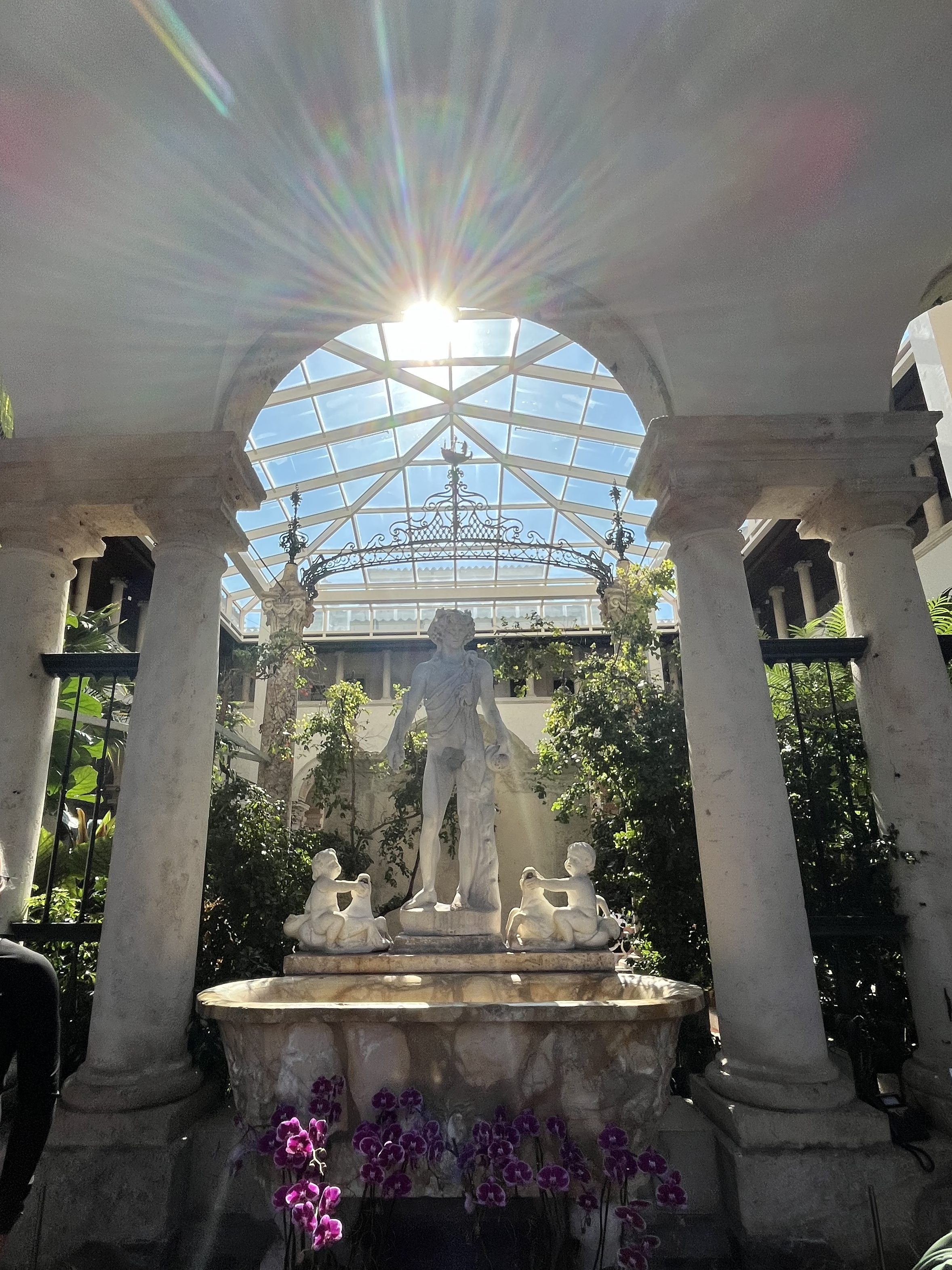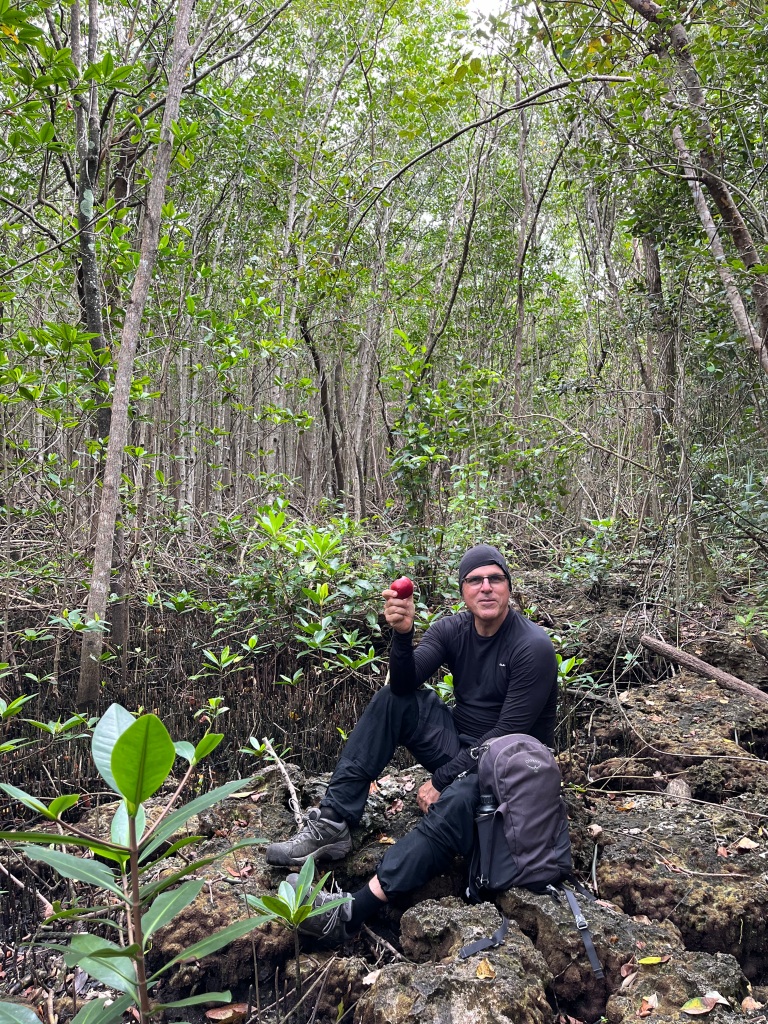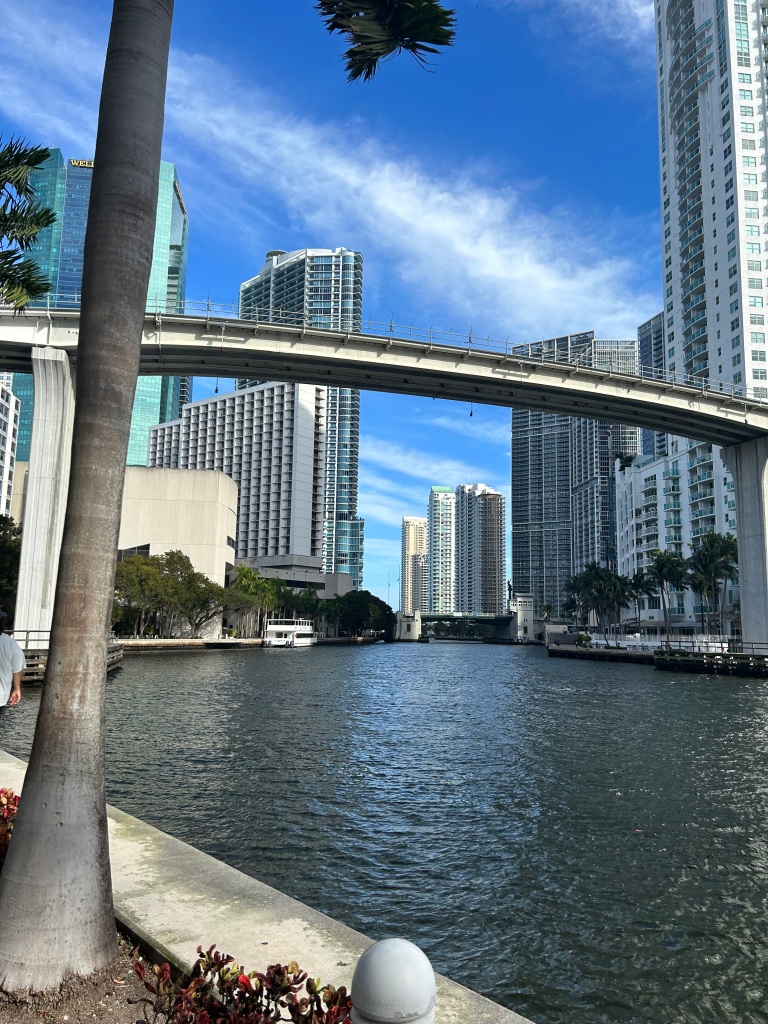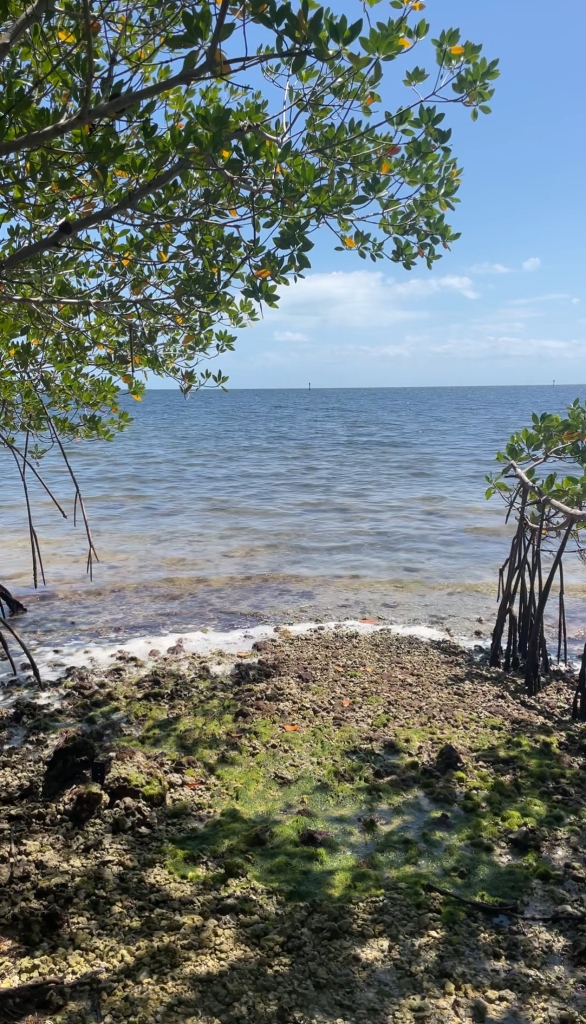
My name is Victoria Fonseca and I am currently a senior at FIU majoring in Digital Broadcasting. I really enjoy writing, reading and traveling. I really look forward to what this class has to offer.
MIAMI ENCOUNTER AS TEXT

Miami has always been a home and a refuge. Throughout my childhood in Venezuela, my father had many family members in Miami that we visited often. Once I turned 6 years old, my mother made the final decision for my father, her and I to leave our family in Venezuela behind to seek a better quality of life. When I first arrived in Miami in 2008, I was one of the only Venezuelans in my school. The neighborhood of Westchester, right in front of FIU’s MMC campus is where I currently live and where I’ve grown up my entire life. Cuban culture always reigned when I was in school and landmarks for the Cuban community were all I knew when it came to Miami’s history. Venezuelan, Colombian and various other Hispanic cultures were large influences in my life while growing up in Miami. However, as I’m getting older, I’m beginning to see how big Miami really is and each neighborhood has drastically different perceptions of the city. I feel like my ignorance growing up held me back from exploring all the communities that have built Miami up over the years like the Bahamian communities in Coconut Grove I learned about recently.
I always assumed because I had lived here for the majority of my life that I knew what this city was about and understood it like a local. But the truth is, if I’m further than 20 minutes away from my neighborhood in any direction, I feel like I’m in a completely different reality. Suddenly the city I think I’ve known is a strange land with places and streets I don’t recognize. Now that I’m in college I think about how much I’d like to branch out and travel to new cities but it feels like the universe (if you believe in those kinds of things) is telling me I must know and feel connected to where I come from before I can plant roots in different places. When I heard about the Miami in Miami class, it not only looked genuinely fun, but it also gave me the opportunity to expand my knowledge beyond what I’ve seen and experienced in the city I call home.
Miami is such a unique melting pot of Caribbean culture that seeps into everyday life. Every community carries its own history and generations of people who have come to the United States seeking better opportunities. I find it to be a shame that these communities, especially those in areas of Overtown, are so overlooked when schools teach students local history. There’s so much I’ve only come to learn now at 21 years old. So many groups of people have been able to find a piece of their home in Miami even if they’re far from their actual birthplace. Miami in Miami will be a wonderful opportunity to act like a real local and have an authentic experience of a city I thought I knew well. It’s a different side of Miami I’m excited to learn about.
HISTORIC MIAMI / OVERTOWN AS TEXT U31

Credits: Victoria Fonseca
This past Wednesday, I had the opportunity to take a trip to Overtown, a historic black neighborhood in Miami that is bearing the brunt of gentrification efforts in the city. As one walks through the streets of Overtown the rich history and remnants of decades of segregation are seen in between construction sites and new luxury condominiums. As soon as I arrived at the first destination in the Lyric Theater and heard professor Bailey’s lecture on it, I understood we were in a historical place, and as we walked through the block it was an endless historical site one after the other.
And yet, with all this history, we were some of the only people actually walking around the neighborhood. Our second destination, the Greater Bethel Church, was my personal favorite. Something about listening to Mrs. Godfrey’s speech about the church and her stories about growing up in Florida during the Jim Crow was incredibly insightful. I personally have never had an in depth conversation with anyone who had lived in the United States during that time since all of my family comes from Latin America. Listening to her speak was powerful, her passion for the church and the way it builds community resilience for people in Overtown was really beautiful.
I am currently working on a fellowship with FIU and the Mellon Grant, which focuses on community race, risk and resilience in these specific communities of Miami like Overtown and Coconut Grove. That experience on the fellowship focuses on listening through stories of these neighborhoods through an audio format. However, through the Miami in Miami course I have the on-site experience of visiting these communities and understanding the historical role that they play in Miami’s story. It has been a really awakening experience these past couple of months as I feel like I’ve learned so many new things about a city I always believed I knew.
The guidance provided by the professor and all of the great and warm locals felt like a homecoming in many ways. The architecture made me think of how beautiful the neighborhood could be had it been preserved by the city properly. I find it a shame that cities like Miami are becoming victims of gentrification on such a scale that places with so much history can be thoughtlessly bulldozed for profit. Honestly, I’d be lying if I said I have hope that these sites in Overtown will be preserved. But I do believe that raising awareness about these places through classes like this can help preserve the history in all of our memories and encourage us to become more involved in the community.
I feel privileged that I had the chance to visit Overtown and get the experience I did because I had passed by in my car countless times on the way to other places in the area without giving it a second thought. Every local and/or tourist in Miami deserves to have the kind of day we did in this magnificent neighborhood.
Deering Estate As Text U31

Credits: Victoria Fonseca
Our second class did NOT disappoint. The Deering Estate, another hidden gem in the city of Miami only 20 minutes away from my childhood home, gave me another unforgettable experience. I always felt like anything that involved nature was a bit intimidating for me, honestly, I never saw myself as the athletic type, and I never really appreciated Miami for its natural landscapes. However, as we hiked through the Estate and through its extensive ecosystems, I felt like I was discovering a new side of myself, a side that not only enjoyed being outdoors, but thrived within it.
What fascinated me the most was the fact that we got to see Miami’s REAL ecosystems, most of which looked completely different to the touristy beaches and palm trees that line the streets. It was an ecosystem full of mangroves, freshwater and all different kinds of elevations, not just the flat swamps we often think about when we think of Florida. The Deering Estate’s history was so interesting and the architecture was breathtaking (the free parking was nice too).
As I’ve gotten older and busier, I’ve started to find the beauty in what people call “third places”, this describes the places where people get to just live and spend time in with no obligations. No money or extra people required. Places like parks, coffee shops, libraries, etc. With the evolution of technology and social media, many articles and content creators have commented on the lack of third places for people to socialize and exist outside of a school, work or nightclub/bar setting.
As a college student who commutes to campus, I’ve often felt lonely, like I was lacking the “real” college experience due to the fact that Miami to me, is just Miami. Not some special city, not a place to party, just little old Miami, my boring hometown. But I realized that much of my perspective was influenced by my lack of involvement in things outside of school, work, or nightlife. The more I began to go out to parks and coffee shops even just to study there, my mood improved drastically. I’vev started to emphasize the importance of going outside simply just to go outside.
The reason why Miami in Miami feels like such a special class to me is because it’s teaching me to appreciate the beauty and the spaces that were always in front of me. Miami is not lacking in “third places”, I think these places just get overshadowed at times by the ‘glitz and glamor’ of what people THINK Miami is. Our experience at the Deering Estate not only challenged me and took me out of my comfort zone, but taught me the fun of spending a day out just hiking and taking in the serenity of the space.
Another highlight for me was getting to meet one of the artists in residency, Alexander Zastera, his work was stunning and made me feel so inspired and proud that local creatives are being supported and encouraged to make work that is true to them. Overall, I had a great time and could not shut up about it for days after. I CANNOT wait to see what more we learn with professor Bailey and with all the great classmates Miami in Miami has given me.
Coconut Grove/Vizcaya As Text U31

Credits: Victoria Fonseca
Our third class in Coconut Grove and Vizcaya felt like such an escape from the usual routine that keeps me in the same neighborhoods most of the time.
Vizcaya was this preposterously large mansion with the craziest art pieces and architecture. It was beautiful and kind of ridiculous all at the same time. I recall a trip I took there once when I was on an elementary school field trip, it was still as beautiful as I remembered. But when having more context on James Deering’s escapades, it felt like the beginning of Miami’s raunchy reputation.
Side note: The amount of teenagers taking Quince’s photos was also the most Miami thing I’ve ever seen and I loved it.
After our tour through Vizcaya’s maximalist rooms and garden, we moved on to a busier part of Coconut Grove by the Cocowalk open-air mall. Growing up in Miami, this mall and the whole neighborhood represented luxury and wealth, an area of Miami only certain groups in certain tax brackets could reach. What I never learned growing up were the real origins of this neighborhood and the Black communities that built the city up despite being discriminated against and treated as second-class citizens. As we walked through to the area of West Grove, the traces of segregation and the screams of gentrification were loud and clear.
A common theme within our Overtown class and Coconut Grove right away was the construction and the stark contrasts in architecture. You can tell what’s new and what’s slowly being lost right away. Once we arrived at the more suburban part of the Grove, we saw the Bahamian style houses with a handful of renovated and more generic looking modern homes that ironically stood out. In between these houses, the colorful Christ Episcopal Church carries a sense of serenity similar to how I felt during our visit to Greater Bethel Church.
The inside was beautiful, the stained glass was so impressive I was surprised Artist collectives in the city don’t highlight and protect the space more. The intersection between faith and community is really fascinating to me even though I’m personally not always sure about what I believe. Where I come from in Venezuela, Catholicism is a uniting factor in our small town where everyone knows everyone. Catholic school is a MUST there. I didn’t really grow up there for long, so my experience with religion is kind of… unclear. But as I’ve gotten older and traveled more (even within Miami), I’ve seen how religion for many people is a tool of resilience within marginalized communities.
As we learned more about the amount of Bahamian influences in Coconut Grove, it was even more interesting seeing how the scenery drastically changed once we walked out of the West Grove area. The European architecture and lush greenery was the side of the neighborhood I had seen before, very upper-class “you’re not allowed here” vibes.
Overall, the class like all the ones before has been really insightful. As someone who’s been obsessed with leaving Miami for the past couple months, experiences like this make me see what I’ve always known with a new perspective.
Everglades As Text U31
“Here are no lofty peaks seeking the sky, no mighty glaciers or rushing streams wearing away the uplifted land. Here is land, tranquil in its quiet beauty, serving not as the source of water, but as the last receiver of it. To its natural abundance we owe the spectacular plant and animal life that distinguishes this place from all others in our country.”
-President Harry S Truman, address at the Dedication of Everglades National Park, December 6, 1947

For the sake of honesty, I’ll say I wasn’t excited as the days led up to our Everglades excursion. All I wanted to do was to get through it and get it over with. As we drove to the slough slog I was both curious and ready to be uncomfortable, the whole being fully dressed in the muddy water FREAKED me out. Regardless, I put on my water shoes and grabbed my walking stick as we parked on the side of the somewhat dangerous street (ironically, not because of the animals but rather clumsy humans who mishandle vehicles).
As we started to walk through the uneven terrain, I felt safe but alert because I refused to fall into an unexpected hole and swim my way through. We walked for a little until we made our first stop. The ranger and the professor started to speak and then I heard, “ Do you hear that?” we all went quiet, there were sounds from speeding cars passing by the street, but there was something else. A vibration, a deep bellow, and a mating call. This meant an alligator was near.
When preparing for the day, I had only been thinking about the water, but not as much about the animals that lived within it. The chances of actually seeing an alligator up close felt so low that it hardly seemed like a possibility. Subconsciously, I knew we would be just fine but the bellow made me much more alert. Not one step was taken before I could check the terrain levels with the walking stick. It became almost primal, the sounds of the road slowly became few and far in between as my mind was filled with nothing but checking my steps and keeping up with the group.
We walked deeper into the dome and I was surprised at how deep it went. I started to get used to being in the water and actually started to enjoy the experience at one point. We stood near an alligator hole where we were able to see our big scaly friend sunbathing for energy. Although we were so close to the alligator, the ranger did not hesitate at all, which reassured me.
After our rare sighting, the most memorable of the slog for me was our silence exercise. In the chaos of trying to keep up and get through the mud, it was a moment of reflection. I had always seen myself as such a city girl, I underestimated myself by assuming nature and athleticism was never my thing. But as I get older, I begin to appreciate natural landscapes so much more because they bring out the most serene and recharged version of myself. I thought about life, death and how they all intertwined within this environment full of living beings just existing in their habitats. The exercise felt significant during this time where being seen living life is more important than actually living it. But here, in this place, no one hears you or sees you, nature is in charge and you’re just along for the ride. It’s a surrender of control.
I was borderline embarrassed that I had no idea that our drinking water came from here, this place I never thought about was significant not just for the animals, but for our existence and survival. I appreciated the park ranger throughout the slog, she made me feel a sense of comfort, because her passion for the park made me warm up to an animal I had so many misconceptions about. I’ve lived in South Florida for 16 years and had never actually been to the Everglades. I knew it was there, but it never occurred to me that I should actually visit it. Outside of the infamous Airboat rides I had seen ads for a million times on TV, I didn’t know anything about the animals or how big the park actually is. It was a trek that was stimulating to the senses. The day I was the least excited for gave me one of the most unique experiences any Everglades visitor has had. It made me feel more connected to Miami and its biodiversity. Each class has pushed me out of my comfort zone for the better, and I’m grateful I chose this challenge.
South Beach as Text U31

Credits: Olivia Gibson
The luxury of Miami Beach has always overwhelmed me ever since I was a kid. It was this busy, expensive, promiscuous place I didn’t quite understand. The beach in my home country of Venezuela filled me with some of the most beautiful memories, but Miami Beach, despite its beauty, was intimidating to me. While we walked through its streets, it was a mix of things old and new. Art Deco buildings full of souvenir shops, bars and restaurants. Something I really found interesting was the professor’s mention about the amount of protection these buildings receive.
The way Miami Beach is built feels unsustainable when you look at the actual foundation of these buildings, yet they receive 10x more protection than any historical landmark we saw in Overtown or West Coconut Grove. It’s an interesting city that feels both a part of and completely separate from the Miami I’ve always known growing up.
The architecture is a sight to behold, especially from South Pointe Pier, one of my favorite places in Miami Beach, the weather was at its perfect point by the time the class started. Walking as a class always ends up creating my best memories in this class, especially walking through busy Ocean Drive with all its different characters that you can encounter at any time.
It can be upsetting to admit, but it’s always felt like Miami Beach caters to outsiders more than locals. Our walk through with Professor Bailly was a fun experience because his lecture gave us insight into the little easter eggs of history buried all over the city, but it also reminded me that elitist entities will always try to turn experiences that should be a given for locals into money making opportunities. It was especially outrageous as a local to hear the professor mention that the metro being extended to the beach was a possibility before Miami Beach’s city officials denied it. They don’t want us here if we can’t afford it, and they don’t hide it.
One thing I will give South Beach though, is this certain kind of freedom in the air. One of the only places where it’s acceptable to get a drink at 10 AM if your heart desires, jam-packed with tourists and locals alike that look like Abercrombie models. It’s a tempting place, if I wasn’t from here I think I would be more captivated by Miami Beach’s allure. There’s a dichotomy in Miami in general between wellness and partying that’s really interesting to me. People go on their morning walks and buy $16 Pura Vida salads by day as they get ready to party like degenerates by night. There’s a strange balance to it all that feels particularly obvious at Miami Beach.
Overall, class was fun and informative as usual, as I understand more about my city, I fall in love with it while also understanding the systemic flaws that should be addressed in order to promote sustainability. Locals deserve to feel welcome in their home and the city should want that for them as well.
Miami Final Reflection U31

Credits: Victoria Fonseca
Ever since I became a part of the Honors College at FIU, I realized that I had to take every opportunity to challenge myself while I could. I feel grateful not only to the college but to the resources the university has given me to learn and develop as a human being through education. I knew ‘Miami in Miami’ would push me out of my comfort zone, but I wasn’t ready for how much I would really love the experience. ‘Miami in Miami’ is the kind of class that leaves you with the kind of knowledge you can’t help but want to share with everyone you come across.
From our first class in Overtown, Professor Bailly exposed us to the real Miami, not the ‘flash and trash’ people tend to associate with the city. I’ve grown up in Miami for a majority of my life, and through this class I saw my city for what it really was; in all its glory and its imminent demise. It made me appreciate the beautiful communities that built this city up with no thank yous or credit for their efforts. After feeling so much desperation to leave for such a long time, I started to love Miami again, because now I understand it.
The knowledge from this class aided me in every aspect of my life, within my fellowship through the Commons For Justice Mellon Grant and as a local. I actually wish everyone, whether at FIU or not, could take a class like this. Learning more about my city made me want to take care of it and the communities within it. Some of my favorite classes ended up being the ones I least expected. I always saw myself as a relatively calm person, not adventurous or outdoorsy at all. But, I connected with nature in an almost magical way in this class.
U31 was such a special section with some of the kindest people I’ve ever met in a class. We were all eager to learn and get involved because that was the point of signing up for it in the first place. The first day where we all introduced ourselves, many of us said we were eager to push ourselves and make friends, and I found that my section really connected in a special way. We saw alligators up close together, walked through mangroves, went to church (multiple times) and explored like tourists and locals.
Miami is a special place, and I feel connected to it because of how diverse it is. Caribbean people have come here because we feel like this is our home away from home. For a while, I felt like my home didn’t want me here, with its expensive luxury condos and focus on bringing money, it felt unattainable to stay here. Sometimes it still feels unattainable, but I appreciate the city for the varied communities and ecosystems that make it a household name.
Dear Miami & “Miami in Miami”,
Thank you.
























































































